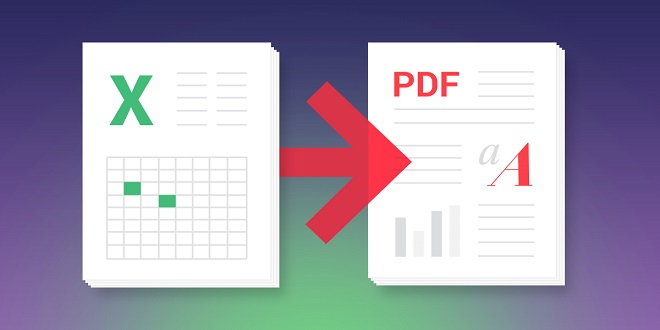Sometimes, you may find yourself in a situation where you need to convert an Excel file into the PDF format. This can be a daunting task, especially if you are not sure of the right approach or steps to take. Fortunately, convert PDF to Word conversion is not as difficult as it may seem. In this blog post, we will provide you with a comprehensive overview of the entire Excel to PDF conversion process. We will discuss the tools and techniques that can be used to get the job done with ease, as well as some of the best practices to ensure the highest quality output. So, if you are looking for a guide that can help you understand the entire process, you have come to the right place. Let us begin our discussion.
- An Overview of PDFs
PDFs, or Portable Document Format files, are one of the most widely used file types for sharing documents online. PDFs are created from any document or image file, and can be viewed on any device with a PDF reader. What makes PDFs so great is their ability to keep the original formatting of the document, no matter how complex, and even preserve complex graphics, such as charts and diagrams. Additionally, PDFs also provide security features such as password protection, encryption, and digital signature support, making them a popular choice for confidential documents.
- Reasons to Convert Excel to PDF
The Excel to PDF conversion process is an increasingly popular way to store and share data securely. Not only does converting Excel to PDF allow you to securely share data, but it also has a number of other benefits. Here are the two main reasons to convert Excel to PDF:
- Security: By converting Excel to PDF, you can be sure that the data within the file is secure and can’t be easily manipulated by malicious actors. PDF files are also much harder to edit than Excel documents, which further increases the security of the data.
- Portability: PDF is a widely accepted file format, meaning it can be easily shared between different operating systems and devices. Converting Excel to PDF also makes it easier to view the file on mobile devices, and the PDF format takes up less disk space than the Excel format.
- Different Ways to Convert Excel to PDF
When it comes to converting Excel to PDF, there are many different methods you can use. The best approach will depend on your needs and the specific document you are converting. Here are three of the most popular ways to convert Excel to PDF.
First, you can use the built-in “Save As” feature in Excel. This is the simplest and quickest way to convert an Excel document to PDF. All you have to do is open the Excel file, select “Save As,” choose “PDF” from the list of file types, and click “Save.”
Second, you can use a dedicated PDF converter. Many of these programs offer specific features and options for converting Excel files to PDF documents. The advantage of using a dedicated PDF converter is that it allows for more customized options, such as page size, layout, and quality.
Finally, you can use an online conversion tool. These tools are convenient and often free, but they are also less reliable than other methods. Still, if you only need to convert a simple Excel document, then this approach could be a good option.
- Tips for an Effective Conversion
When it comes to converting Excel documents to PDF, it is important to ensure that the conversion is effective. Here are four tips to help you achieve successful conversions:
- Ensure that all elements in the Excel document are properly formatted. Make sure to adjust margins, column widths, font sizes, etc. before conversion.
- Preview the document before converting. This will allow you to make any necessary changes prior to conversion.
- Choose the right tool for the job. There are many tools available for Excel to PDF conversion, so research your options and choose the one that best meets your needs.
- Test the converted file. Once the conversion is complete, you should test the PDF file to make sure that all elements have been properly converted. This will help ensure that the PDF is accurate and complete.
- Potential Pitfalls to Avoid
One of the potential pitfalls to avoid when converting Excel to PDF is that some of your formatting or styling may be lost. Since PDF is a static format, your Excel worksheet’s data will have to be converted into a static form in order to be saved as a PDF. This may lead to some of your data or formatting appearing differently than it did previously when you open it as a PDF. Additionally, some Excel worksheets may not convert properly, depending on the complexity of the data. Therefore, you should always check the PDF version of your worksheet to make sure everything looks right before sending it out. Additionally, you should also consider saving a backup of your worksheet as an Excel file in case you need to make any changes later.
In conclusion, the Excel to PDF conversion process is an effective way to quickly and easily transform Excel data into a PDF format. Although there are a few potential pitfalls to watch out for, with careful preparation and a few simple steps, users can easily and accurately convert their Excel data into a PDF format. This will give them a document that can be shared, printed and distributed easily and securely.
 BESTCITYTRIPS
BESTCITYTRIPS




